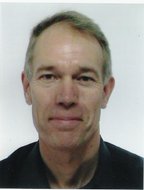
Thursday, November 10, 2011
4:00 – 5:30 pm
Boeing Auditorium FXB Building
The seminar for Thursday, November 10, features Steve Elliot and is a joint seminar with the Aero Department. Elliott graduated with first class joint honors BSc in physics and electronics from the University of London, in 1976, and received the PhD degree from the University of Surrey in 1979 for a dissertation on musical acoustics. His current research interests include modular systems for active feedback control and modelingthe active processes within the cochlear.
Professor Elliott has published over 200 papers in refereed journals and 400 conference papers and is co-author of Active Control of Sound (with P A Nelson 1992), Active Control of Vibration (with C R Fuller and P A Nelson 1996) and author of Signal Processing for Active Control (2001). He is a Fellow of the Acoustical Society of America, the IET and the IOA and a senior member of the IEEE. He was jointly awarded the Tyndall Medal from the Institute of Acoustics in 1992 and the Kenneth Harris James Prize from the Institution of Mechanical Engineers in 2000.
Abstract: The low frequency sound and vibration inside many aircraft is now attenuated using commercial active control systems. These typically operate using many shakers acting on the structure to modify its vibration and hence reduce excitation of the sound field.
As the structure becomes larger, the number of actuators and sensors required for effective control rises significantly. Conventional, fully coupled, control systems then become costly in terms of weight and sensitivity to individual failures. An alternative strategy is to distributing the control over multiple local controllers, which has been shown to be effective in a number of cases. Recent work will be presented on tuning these local control loops to maximize the power they absorb from the structure, which may allow the mass production of generic active control modules that include an actuator, sensor and self-tuning controller.
The workings of the inner ear also provide a remarkable natural example of distributed active vibration control, whose objective is to enhance the motion within the cochlea. A simple model for this cochlear amplifier, in which each of the outer hair cells act as local control loops, will be described and its use illustrated in predicting the otoacoustic emissions generated by the ear. These emissions are used clinically to screen the hearing of young children and so it is important to understand how they are generated within the cochlea.
For more information on future department seminars, visit the ME Seminar Series page.